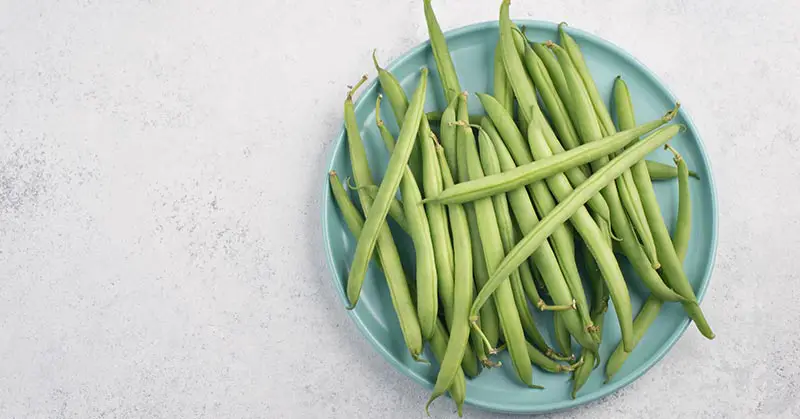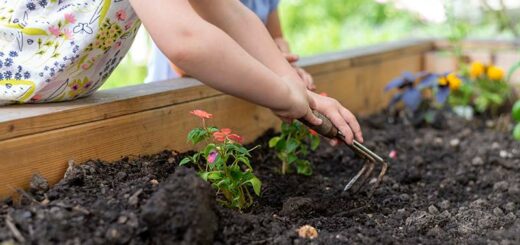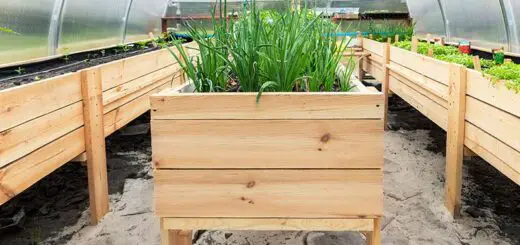Problems with Blue Lake Pole Beans
Blue Lake Pole Beans, a gardener’s favorite for their unparalleled flavor and texture, come with unique challenges, including pesky pests and particular environmental needs. Discovering these issues is the first step to ensuring a thriving crop.
Dive deep with us as we unravel these intricacies, offering invaluable insights and expertise. This isn’t just about a successful harvest; it’s about enriching your gardening journey with knowledge and mastery over this beloved bean.
Importance of Understanding Common Problems for Effective Cultivation
To the uninitiated, gardening might seem straightforward — put a seed in the ground, water it, and watch it grow. However, any seasoned gardener will attest that successful cultivation is an intricate dance of knowledge, observation, and intervention.
Understanding the common problems associated with growing plants is paramount for several reasons:
Foundation for Problem-Solving: Recognizing common challenges lays the groundwork for swift and practical solutions. By understanding a plant’s potential issues, a gardener can more readily identify signs of distress and intervene accordingly.
Prevention Over Cure: Awareness of recurring problems allows for a proactive approach. Instead of dealing with diseases, pests, or nutrient deficiencies once they’ve taken hold, gardeners can implement preventive measures, ensuring that many issues are sidestepped altogether.
Resource Efficiency: By pinpointing and addressing problems early on, gardeners can reduce wastage of resources. For example, understanding that a particular plant is susceptible to a specific pest means targeted treatments can be applied instead of broad-spectrum pesticides that might harm beneficial insects.
Maximizing Growth Potential: Plants can thrive without hindrances when common challenges are understood and managed. This means they can reach their full growth potential, leading to more abundant and healthier yields.
Knowledge Sharing and Community Building: As gardeners understand and tackle common problems, they can share their experiences and solutions with the broader community. This collaborative spirit fosters innovation, with gardeners collectively finding better and more sustainable ways to address challenges.

Overview of Blue Lake Pole Beans
Origin & Popularity
Blue Lake Pole Beans have their roots in the early 20th century and quickly rose to prominence because of their outstanding flavor and reliability. They’ve been a staple in many gardens and kitchens across the U.S. and beyond.
Physical Characteristics
Known for their long, straight pods, Blue Lake Pole Beans typically produce smooth, green beans free from strings. They have a tender texture and sweet flavor, a favorite among bean enthusiasts.
Growth Habit
As the name suggests, these beans are pole cultivators, which means they grow upwards, twining around a support structure like poles, trellises, or other vertical frameworks. This climbing nature can result in plants reaching heights of 5-6 feet or even more.
Culinary Uses
Their consistency and rich taste make Blue Lake Pole Beans a versatile ingredient in the kitchen. Whether blanched, steamed, sautéed, or used in casseroles, they retain their flavor and texture, making them a preferred choice for many dishes.
Cultivation
While they are pretty hardy and adaptable, Blue Lake Pole Beans thrive in well-draining soil and full sunlight. Regular watering, especially during flowering and pod formation, is essential for a healthy yield. As climbers, they require staking or support for optimal growth.
Common Problems with Blue Lake Pole Beans
Pest Issues
a. Mexican Bean Beetles: These pests resemble ladybugs but can cause significant damage to the bean plants. Their larvae and adults feed on the underside of the leaves, leading to a lace-like appearance.
b. Aphids: These tiny insects suck the sap out of plants, weakening them and potentially transmitting diseases. They also excrete a sticky substance called honeydew which can lead to sooty mold growth.
c. Spider Mites: They cause stippling on leaves, and in heavy infestations, you might notice webbing. Leaves may eventually turn yellow and drop off.
Disease Challenges
a. Bean Rust: This fungal disease presents as small, reddish-brown spots on the bean leaves and, in severe cases, can cause defoliation.
b. Powdery Mildew: Recognizable by white powdery spots on leaves, it thrives in humid conditions and can affect plant health and yield.
c. Root Rot: Caused primarily by overwatering or poor drainage, it leads to the decay of roots, stunting growth, and possibly killing the plant.
Environmental Stressors
a. Inadequate Sunlight: Blue Lake Pole Beans require full sun to thrive. Insufficient sunlight can lead to weak plants with fewer pods.
b. Watering Issues: Both over-watering and under-watering can be problematic. The former can lead to root rot, while the latter can stress the plant, reducing yields.
c. Soil Quality: Poor soil that lacks essential nutrients or has imbalanced pH levels can hinder growth and reduce yields.
Cultural Problems
a. Improper Staking: Blue Lake Pole Beans require sturdy support given their climbing nature. Weak or inadequate staking can result in plants sprawling on the ground, making them susceptible to pests and diseases.
b. Spacing and Planting Depth: Crowding can reduce air circulation, increasing the risk of diseases. Planting too deep or shallow can also affect plant health and germination rates.
Mitigating Problems
Blue Lake Pole Beans are a favorite among gardeners due to their delicious taste and smooth, stringless pods. However, like all plants, they can face various challenges during their growth cycle. Addressing these challenges promptly and efficiently ensures a healthy harvest.
In this section, we’ll explore ways to mitigate the common problems faced by Blue Lake Pole Beans.
1. Regular Monitoring:
Early Detection: Regularly inspect plants for signs of pests, diseases, or other abnormalities. Early detection can make treatment more effective.
Document Changes: Keep a gardening journal. Record any significant changes; treatments applied, and their outcomes. This can help you understand patterns and adjust your strategies accordingly.
2. Organic Pest Control:
Beneficial Insects: Introduce predators like ladybugs and lacewings to control aphids and other pests naturally.
Neem Oil: A natural pesticide that helps deter various pests without harming beneficial insects.
Diatomaceous Earth: Sprinkle around the base of plants to deter crawling pests like beetles.
3. Disease Prevention:
Good Hygiene: Ensure clean gardening practices. Disinfect tools and avoid working in the garden when plants are wet.
Proper Spacing: Overcrowded plants can reduce airflow, promoting fungal diseases. Ensure adequate spacing based on growth guidelines.
Resistant Varieties: If particular diseases persist, consider planting disease-resistant bean varieties.
4. Environmental Adjustments:
Optimal Sunlight: Ensure that the beans are planted in a location receiving at least 6-8 hours of direct sunlight daily.
Watering Techniques: Water the plant base early in the day to reduce evaporation and prevent water from sitting on leaves overnight, which can promote fungal growth.
Soil Quality: Conduct a soil test to ensure optimal pH and nutrient levels. Amend the soil with compost or other organic matter to improve its structure and nutrient content.
5. Enhancing Pollination:
Attract Pollinators: Plant flowers that attract bees and other pollinators. Examples include marigolds, zinnias, and sunflowers.
Manual Pollination: In extreme cases where natural pollination isn’t occurring, use a small brush to transfer pollen from one flower to another.
6. Addressing Cultural Problems:
Staking: Use solid and tall stakes or trellises to support the climbing nature of Blue Lake Pole Beans. Ensure they’re sturdy enough to handle the weight of mature plants.
Planting Guidelines: Follow recommended planting depths and spacing to ensure proper germination and growth.
Fertilization: Over-fertilizing can be as harmful as under-fertilizing. Conduct a soil test to determine nutrient needs and fertilize accordingly.
7. Embrace Crop Rotation:
Planting beans in the same spot year after year can lead to soil-borne diseases and nutrient depletion. Rotate with crops from different families to break disease cycles and replenish the soil.
Final Thoughts
In summary, while Blue Lake Pole Beans are highly favored for their robust flavor and smooth texture, they are not exempt from challenges in cultivation.
From pest infestations and diseases to environmental and cultural issues, growers must remain vigilant and proactive. Yet, with the proper knowledge and mitigation strategies, these problems can be effectively managed.
By understanding and addressing the unique needs of these beans, gardeners can enhance their chances of a successful harvest, reap the rewards of their dedication, and ensure the continued popularity of this delightful variety.
FAQs on Problems with Blue Lake Pole Beans
Q: Why are my blue lake pole beans not producing?
A: Several factors can affect the production of Blue Lake Pole Beans, including inadequate pollination, extreme temperatures, insufficient sunlight, and improper watering. It’s essential to monitor and address these factors for optimal bean production.
Q: What is the disease on pole beans?
A: Pole beans can be affected by several diseases, including bean rust, powdery mildew, and root rot. Identifying the specific symptoms and understanding their causes can help in the appropriate treatment and prevention of these diseases.
Q: How can I increase my beans production?
A: Increasing bean production involves providing optimal growing conditions, ensuring proper spacing, promoting pollination, using disease-resistant varieties, and practicing crop rotation. Regular monitoring and addressing any pests or diseases promptly can also help.
Q: Do pole beans need a lot of nitrogen?
A: Pole beans, like other legumes, can fix nitrogen from the air with the help of bacteria in their root nodules. As a result, they don’t require high amounts of nitrogen in the soil. Too much nitrogen can lead to lush foliage but reduced bean production.
Q: What is a good fertilizer for pole beans?
A: A balanced, all-purpose fertilizer with a ratio of 10-10-10 can be beneficial. However, since beans are light feeders, keeping the fertilizer manageable is essential. Additionally, since they can fix their nitrogen, it’s crucial to ensure they aren’t given excessive nitrogen.
Q: Can pole beans get too much sun?
A: Pole beans thrive in full sunlight, which generally means 6-8 hours daily. However, areas with particularly intense and prolonged sunlight or heat may benefit from some afternoon shade to prevent stress or scorching.



